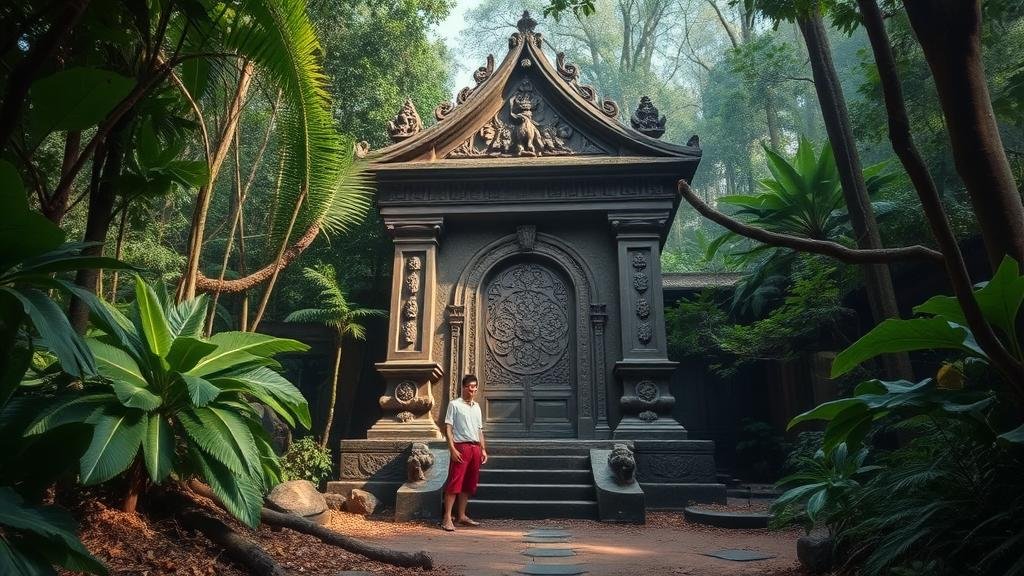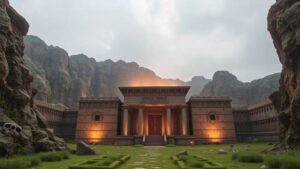Discovering the “Altar of the Forgotten Gods,†hidden deep within a jungle labyrinth.
Discovering the “Altar of the Forgotten Gods†in the Heart of the Jungle
Deep within the lush landscapes of South America lies a hidden treasure that has captivated the imaginations of archaeologists, historians, and adventurers alike: the “Altar of the Forgotten Gods.†This ancient site is nestled in a complex jungle labyrinth that has concealed its mysteries from modern exploration for centuries.
Historical Context
The Altar of the Forgotten Gods is believed to trace its origins back to the civilizations of the Late Preclassic and Early Classic periods, roughly between 600 B.C. and 300 A.D. Historical evidence suggests that this site was a significant spiritual hub for indigenous tribes who revered a pantheon of deities, and rituals were conducted at this altar to honor these ancient gods.
Archaeologists speculate that the site played a crucial role in the trade routes of Mesoamerica, facilitating exchanges not only of goods but also of cultural practices. In 1978, a local expedition led by Dr. Elena Samonte unearthed intricate carvings and artifacts indicative of religious significance, including ceremonial masks and sculpture fragments depicting ancient deities.
Exploring the Jungle Labyrinth
To reach the Altar, adventurers must navigate the dense foliage of a jungle labyrinth characterized by towering trees, thick vines, and a cacophony of wildlife. This environment presents both challenges and rewards for those who dare to explore.
- The labyrinth appears intentionally designed, with paths that seem to shift and change, leading explorers on a confusing but intriguing trek.
- Surrounding flora includes rare orchids and towering palms, some species of which are found nowhere else on Earth.
- Wildlife encounters are common, with glimpses of colorful macaws and elusive jaguars, adding to the mystique of the journey.
In this context, the journey to discover the altar can be likened to navigating a complex puzzle where each turn presents new surprises and challenges, requiring both mental agility and physical endurance.
The Altar: An Overview
Upon finally arriving at the Altar of the Forgotten Gods, visitors are greeted with an awe-inspiring sight. altar, roughly 30 feet wide and adorned with elaborate carvings, showcases the artistry of ancient cultures.
- Intricate glyphs and symbols carved into stone depict various deities, suggesting a tumultuous social and religious history.
- Adjacent to the altar, a series of stone platforms may have served as seats for priests and community leaders during ceremonial gatherings.
In recent years, advancements in technology have allowed researchers to use LiDAR (Light Detection and Ranging) to uncover and map the sites surroundings, revealing hidden structures that could expand our understanding of its significance.
Myths and Legends
The allure of the Altar of the Forgotten Gods is heightened by the myths that surround it. Local legends speak of the “Guardians of the Altar,†spirits believed to protect the site from intrusion and punishment from the gods.
- One legend details a curse placed upon those who attempt to disturb the altars sanctity, leading to mysterious disappearances of explorers.
- Another narrative relates to a hidden treasure said to be buried near the altar, waiting for a worthy individual to uncover it without disrupting the spirits.
These tales elevate the site beyond mere archaeological interest, transforming it into a living piece of cultural heritage that resonates with both history and folklore.
Real-World Applications of Discovering the Site
The uncovering of the Altar of the Forgotten Gods has implications for various fields and industries:
- Tourism: Sustainable tourism centered around the site could provide economic opportunities for local communities while preserving its integrity.
- Conservation: Understanding the ecological context of the altar can help implement conservation efforts for the surrounding jungle, which is critical for biodiversity.
- Education: The site is an invaluable resource for educational programs aimed at teaching the history of Mesoamerican cultures.
Actionable Takeaways
Whether an enthusiast of history, archaeology, or adventure, the journey to the Altar of the Forgotten Gods offers insights into the intricate tapestry of human culture. Here are steps you can take to engage with this remarkable site:
- Consider participating in guided exploration tours led by experts familiar with the regions history and ecology.
- Support local initiatives that focus on preserving the Altar and its surroundings through responsible tourism.
- Engage with academic institutions researching the site to stay updated on new discoveries and findings.
To wrap up, the Altar of the Forgotten Gods serves not only as an archaeological marvel but also as a testament to the rich tapestry of human beliefs and practices that continue to inspire awe and curiosity in the modern world.



